Kalmiopsised [Cal-mee-opp-sis-ed] –adj. 1. being cold, wet, exhausted, and happy in Oregon’s Kalmiopsis Wilderness. 2. in pain and despair in a rugged, harsh place with a big smile your brain is trying to relay to your face muscles.
What is the Kalmiopsis?
First of all, it is a tongue twister of a word to pronounce. But more importantly, it is the name of a 180,095 acre wilderness area in southwestern Oregon.
“The area is characterized by deep, rough canyons, sharp rock ridges and clear, rushing mountain streams and rivers.”USDA Forest Service
The name Kalmiopsis comes from a flower unique to this area called Kalmiopsis leachiana. It was discovered in 1930 by botanist Lilla Leach. She came up with the name because she thought the plant was a new form of black laurel, Kalmia polifolia. This was combined with “-opsis”, the greek root for “seeing, like, sight, appearance” to create the word Kalmiopsis. To see these beautiful flowers, look for small, pink, four petaled flowers close to the ground. Check out the blog on Rare Plants of the Chetco River for more about the different plants found in the Kalmiopsis.
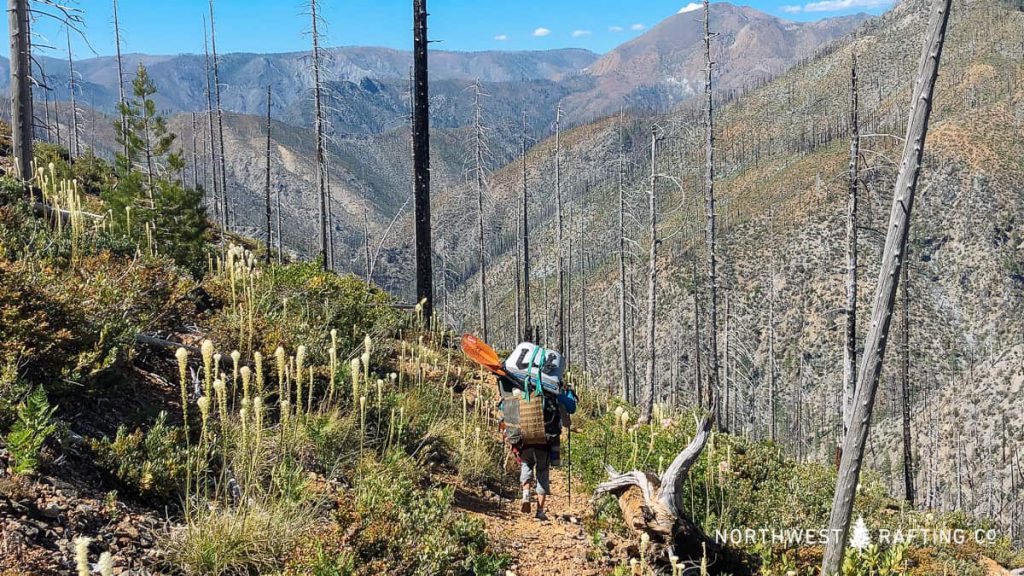 Hiking among small Kalmiopsis Flowers through what we call “The Torture Zone”
Hiking among small Kalmiopsis Flowers through what we call “The Torture Zone”
Its undisturbed, unique soil structure, vegetation and geology absorb rainwater leading to pristine, crystal clear streams and rivers. These rivers are the reason why some people attempt to visit the Kalmiopsis Wilderness. They want to experience floating in deep solitude on the crystal-clear water surrounded by plants seen nowhere else on this world.
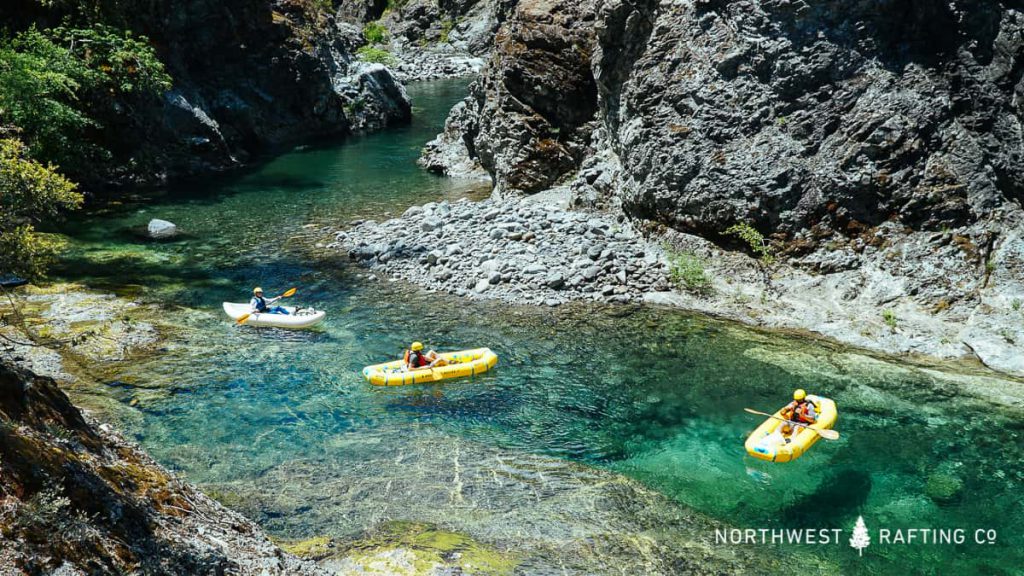 Floating through the rarely visited Magic Canyon on the Chetco River
Floating through the rarely visited Magic Canyon on the Chetco River
The roads and trails to these rivers, however, are more often than not painful, sweaty, challenging, and yet oh so rewarding.
Kalmiopsised on the Upper North Fork of the Smith River
My first time being kalmiopsis-ed was while paddling the Upper North Fork of the Smith River. The put in for the river happened to be the end of an overgrown road with no sight of the river.
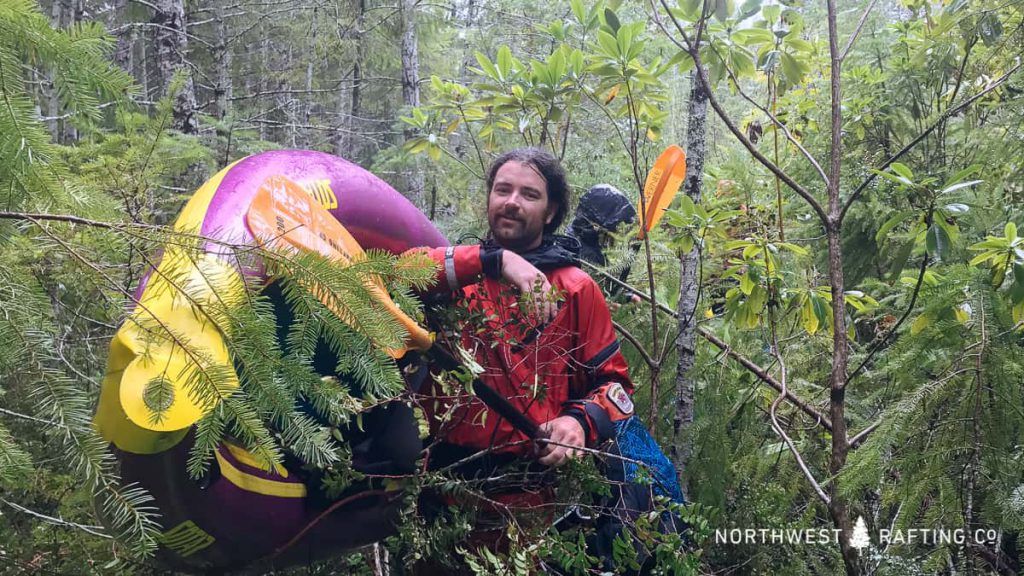 Brodie blissfully bushwhacking into the Smith River headwaters
Brodie blissfully bushwhacking into the Smith River headwaters
It was raining when we started the hike down and continued to drizzle on us throughout the grueling forty-five minutes of lowering and dragging our boats through the dense, steep forest to the river.
“There is a swamp in my ass!”Brodie Sullivan – After a sweaty hike to the put in
After finally reaching the river, we were excited to start paddling only to realize we had to immediately get out of our boats to portage a massive log jam. We had to keep getting in and out of our boats for another fifteen or more log jams during the first mile of our ten mile paddle.
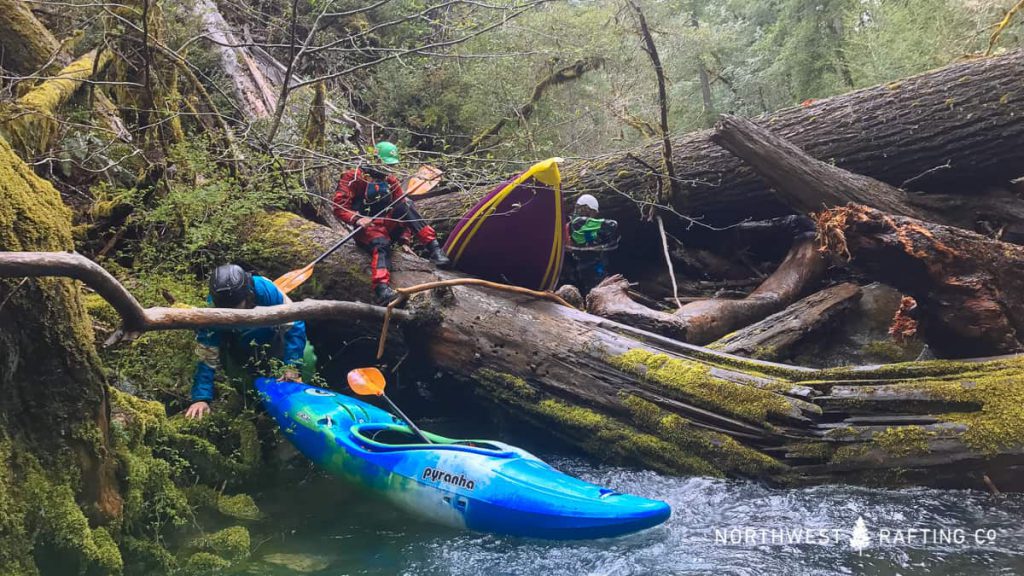 One of many log portages on the Upper North Fork of the Smith River
One of many log portages on the Upper North Fork of the Smith River
At the last log portage, I realized my boat was filling with water very quickly and, to my dismay, I found a six inch crack under my seat. The rest of the trip was spent, again, in and out of my boat as I had to empty it every five to ten minutes. All the challenges of this trip were worth it to paddle this beautiful river.
Kalmiopsised on the Chetco River
There are a lot of ways to be kalmiopsised on the Chetco River. The hike in is always brutally hard and the rapids are not much easier. On my first commercial trip, we spent night three at Chetco Bar. This medium sized rock “beach” only worked as a camp because we were sleeping in our duckies and could arrange the rocks underneath to create a flat sleeping area. It looked like it was going to be a wet night but we were able to set up our tents and eat a hot dinner before the rain hit us.
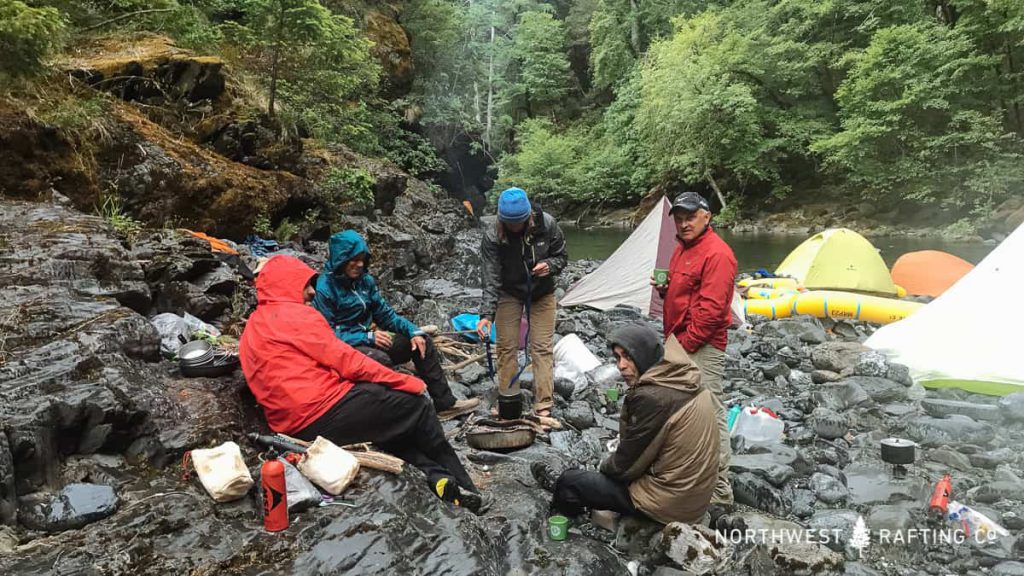 Kalmiopsised at Chetco Bar
Kalmiopsised at Chetco Bar
I was sharing a Hyperlite Megamid with two other guides, all three of our duckies half deflated and strapped together inside. Luckily, we were able to stay relatively dry throughout the rainy night. One guest was using a tent that had a reputation for being great in the rain. The whole tent was waterproof and freestanding and fit perfectly on top of a ducky. Unfortunately, the guest using that tent was very kalmiopsised. His ducky was at a slight downward angle and the rain slid between the tent and ducky creating a nice pool of water inside the tent. His sleeping bag was soaking wet in the morning and he did not sleep at all.
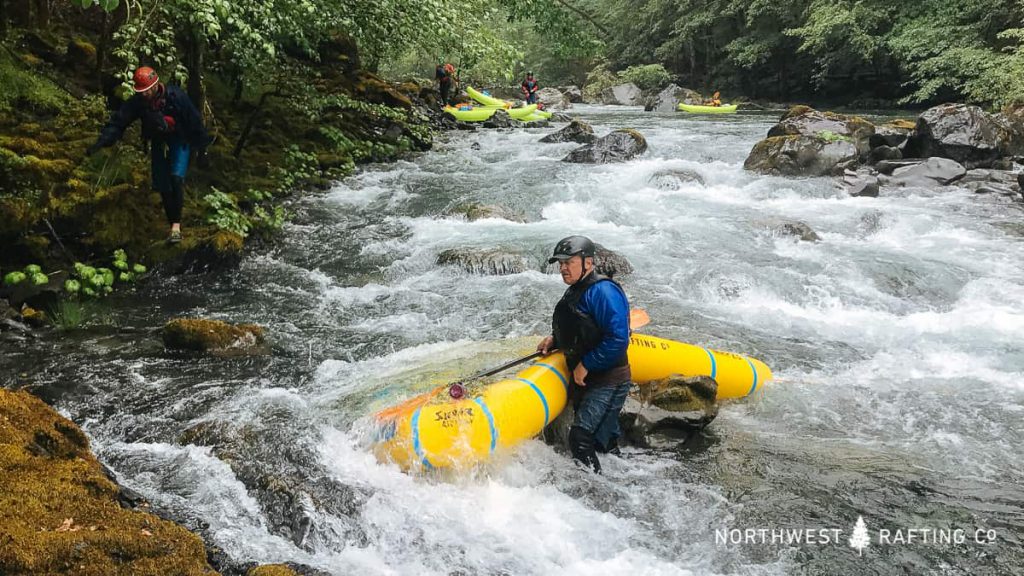 A wrapped ducky after a cold, wet night with no sleep
A wrapped ducky after a cold, wet night with no sleep
However, he was an amazingly positive person, not complaining once and laughing later about the whole situation. Undaunted, he’s come back to do more trips with us!
Kalmiopsised on the Illinois River
My most recent experience getting kalmiopsised was on the Illinois River. We decided to put in just outside of Selma, Oregon on a tributary called Deer Creek. This made for long twenty mile days and portaging or running Illinois Falls. Nonetheless, we were having a good trip, just a little tired and sore at the end of the day. The hitch came night two when I was setting up my tent. I was putting together my poles, one big one and one small one, when I realized I no longer had my small one.
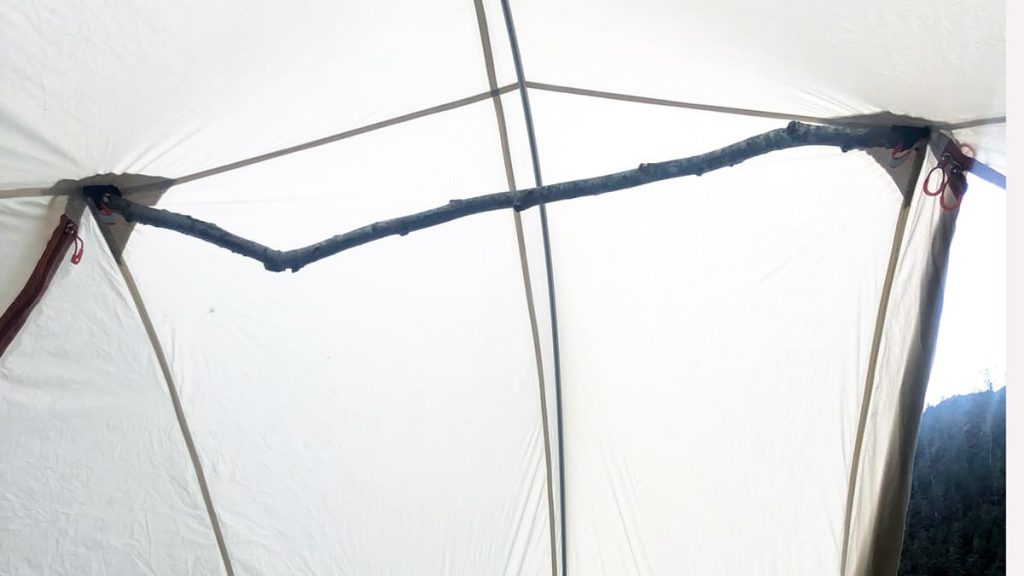 My improvised tent pole on the Illinois River
My improvised tent pole on the Illinois River
It is an important pole, as it makes the top of the tent wide enough to sit up in. I had to improvise for the rest of the trip by finding straight, pole like sticks to use its place.
Kalmiopsised on Rough and Ready Creek
For my next example, I reached out to a friend, Nathaniel Wilson, who provided this:
My first experience with getting kalmiopsised was when a few of us attempted to hike into the upper reaches of Rough and Ready Creek with hardshell kayaks. Our trip lined up with a pretty heavy rain storm which was good for boating but the thick brush and downed trees along the way slowed us down enough that we missed the pulse of water we needed to float down the headwaters.
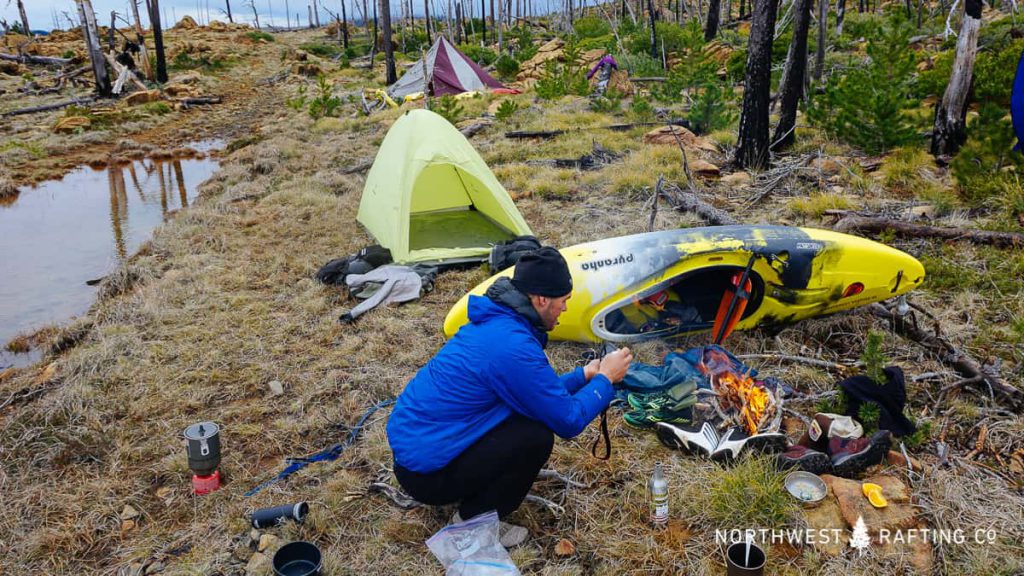 Beautiful first night camp en route to the North Fork of Rough and Ready Creek
Beautiful first night camp en route to the North Fork of Rough and Ready Creek
Once we got to a spot where we could actually see the river on the second day of hiking, there was no chance based on our pace up to that point that we were going to find an access point and still have enough flow to put on with kayaks. From there we walked another day along a ridge line where despite having been soaked by rain in the preceding days, we were unable to find a water source for drinking or cooking.
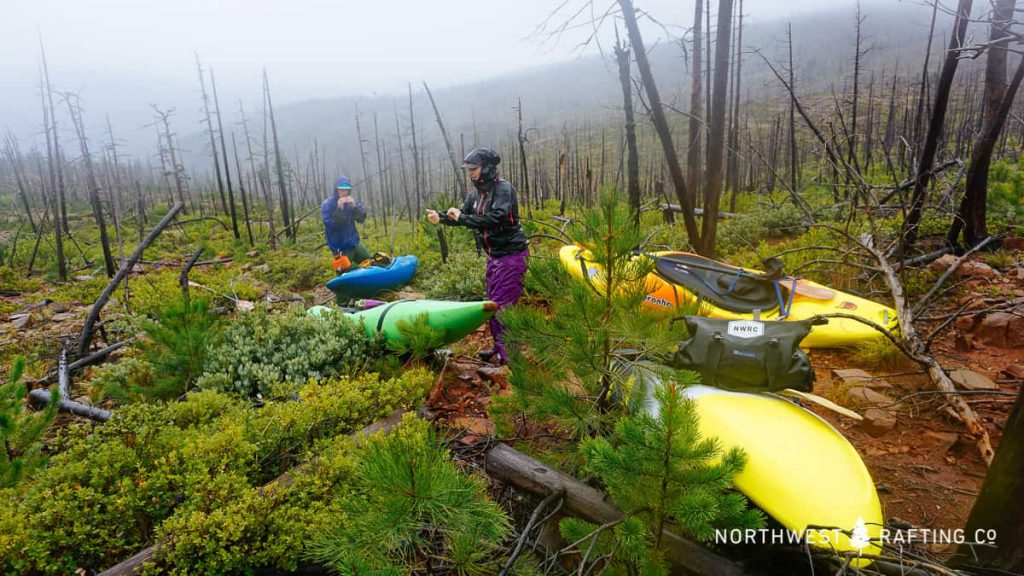 Nate’s campsite after two days of hiking with kayaks in search of Rough and Ready Creek
Nate’s campsite after two days of hiking with kayaks in search of Rough and Ready Creek
On our third day of hiking with kayaks we were finally able to get down to the river at a spot that we could have just walked to from the beginning.
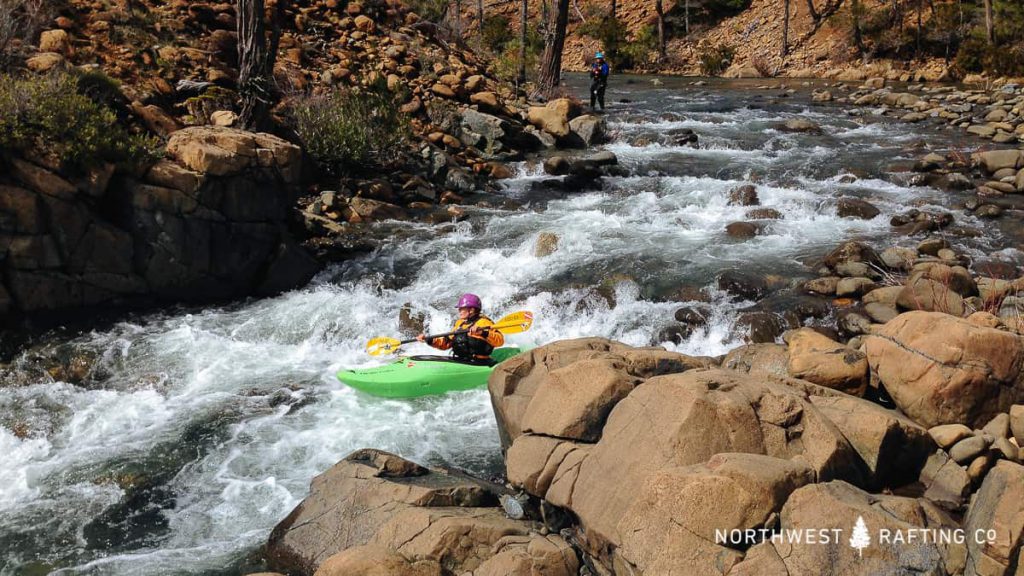 Paddling the elusive North Fork of Rough and Ready Creek after two and a half days of hiking
Paddling the elusive North Fork of Rough and Ready Creek after two and a half days of hiking
The Kalmiopsis has a strange draw for some. There is something incredibly special about it. The whole time you are in it you are challenged—with your physical and mental abilities pushed to their limits—and yet you cannot get enough and so keep coming back knowing you’ll likely be kalmiopsised again.